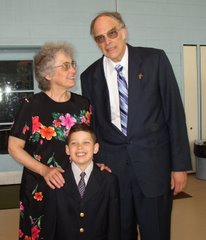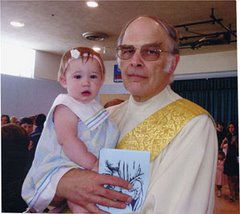Mark 9:2 - 10
Did you ever wonder why Jesus showed himself transfigured to three of his apostles? Was he just showing off? Was he giving them something to remember in the days ahead when he would be undergoing his passion and death? And why didn’t he show himself to all his apostles? If we read further in the gospel of Mark we would find those other apostles down at the foot of the mountain, trying and failing to cast a demon out of a boy. And why Moses and Elijah? The traditional answer is that Moses represents the Law and Elijah the prophets, so that in this scene we see that Jesus is the point at which the Law and the Prophetic tradition come together, once and for all. So much theology.
Well, I don’t know the answer to these questions. I can speculate, just like you can. But there is one thing that stands out. Jesus shows himself transfigured; his face is radiant, his clothing dazzling white, and out of heaven a voice proclaims him beloved Son, and we are commanded to listen to him.
In our family we say a prayer that was given to us by a friend a long time ago. I don’t know if she made it up or got it from somewhere, but it goes like this: “Dear Blessed Mother, we ask that you grant us and our friends and relatives the grace to see themselves as God sees them, and respond to his grace as He gives it, knowing that if you ask anything of the Father He will grant it.”
And while the Transfiguration may signify many things and is certainly a turning point in the ministry of Jesus when he lived on earth, I think it’s worth meditating on the idea that what Jesus is showing us in this moment is how we are in reality, in the eyes of the Father.
There is Moses, who, like Jesus went up on a mountain and asked God to allow him to see him. And God allowed Moses to look upon him, but not on his face, because no man could do so and live. And when Moses came down from the mountain, the people could not look at him, because his face had been transfigured. Moses had to wear a veil when he stepped out in public. And here he is with Jesus. And Elijah, likewise, was on a mountain when there was thunder and lightning but God was not there; God was in the still small voice. And not long afterwards, Elisha, his disciple, witnessed him being taken up into heaven in a fiery chariot. In both cases, we have a glimpse of how God sees human beings.
In the eyes of our Father we are radiant, we are clothed in garments more white than anything on earth; and we are declared beloved. That’s what motivated Mother Theresa to spend her life with the poorest of the poor; it motivated Father Damien to give his life for the lepers of Molokai; and it motivates so many mothers and fathers to spend most of their lives working to provide their children with everything they need to have good and productive lives. And even in some cases those parents want most of all for their children to lead holy lives, to become saints..
I don’t think the apostles deduced that conclusion when they were on the mountain. It says that they were really afraid, and you can’t think clearly when you are afraid. Peter did not know what he was saying when he suggested building three booths, on for Jesus, one for Moses, and one for Elijah. But later the apostles will be listening to Jesus at the last supper when he says, “Anyone who loves me will keep my word, and my Father will love him, and we will come to him and make our home with him.” and again, “Where I am, there my servant will be.” And he says, “that all may be one, as you, Father are in me, and I in you; that all may be one in us…” I don’t think there’s any question that Jesus wants for us what he had himself.
So during Lent we remember that we are sinners. This means that we miss the mark, even in our best moments we don’t quite achieve that which we are capable of. Saint Paul says, “I do not do the good that I want to do, but the evil that I do not want to do, that I keep doing.” And if you are like me, you can identify with Paul. How I wish I could be a saint. The theologian Leon Bloy said, “The only real sadness, the only real failure, the only great tragedy in life, is not to become a saint.”
But today in the transfiguration Jesus gives us hope, because he shows us how God sees us, how we really are. So another thing to remember during Lent is that we are beloved, we are creatures made for heaven, we have been given everything we need to be saints. And how are we taking advantage of that?
Make a resolution to spend a few moments speaking to your heavenly mother Mary and ask her to help you become transfigured, to help you become a saint. We know she would like nothing more than to welcome her children into heaven. .



































